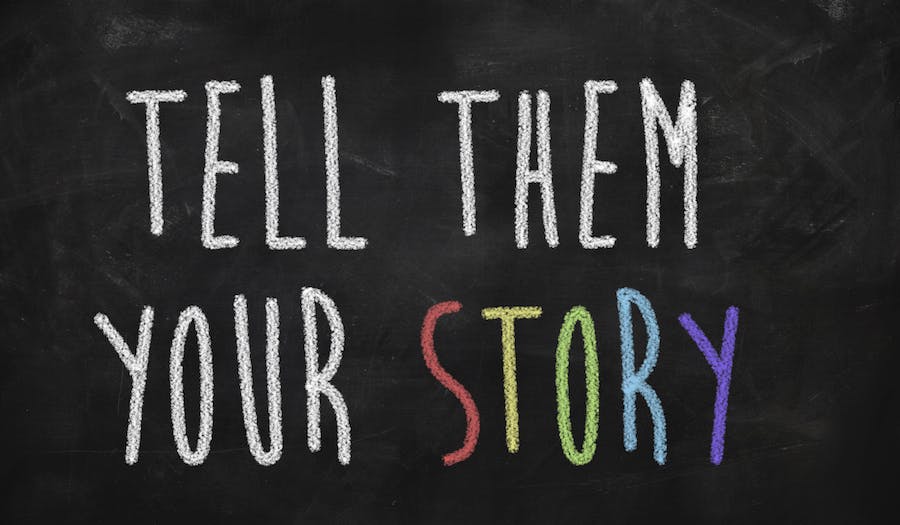Whether told over lunch, read in your favourite novel, viewed from a TV in your lounge room, or even on your phone while waiting for the train to arrive, there’s nothing better than a good story. Each individual and organisation has their own to tell, born out of the experiences they have gained over the years. While the art of storytelling certainly isn’t new, in the age of content marketing, it works. Why? Simply because human brains are hardwired to remember them.
With a typical person processing up to 100 000 words each day, on top of countless images, videos, graphics and other stimuli, never before has it been more important to cut through the clutter of (too much) information. This is where storytelling and content marketing come in. Developing content in your content marketing strategy is like telling your story. It’s reinforcing your brand and getting your target audience to understand what makes you so special. How well you can tell these stories can make your organisation stand out from the rest, and give you a well-deserved boost over other firms.
So how do you harness this power of storytelling?
Start with a strategy. Understand your goals and clearly highlight what you would like to achieve. Whether you’re telling your tale to nurture a lead, to gain awareness for your event or invite people to donate to a charity, it is important to pinpoint your strategy so you have a guide to benchmark your efforts.
Include a beginning, middle and end. Follow the structure of a linear narrative. First establish your story setting and characters, then present a problem/conflict, before providing a resolution. This will give your audience some sort of familiarity and allow them to follow the story without getting confused.
Humanise your brand. No one wants to be friends with your brand. They are, however, interested in the human element surrounding it. Put a human face on your stories and create characters (whether fictional, or not – e.g. buyer personas, stories from employees’ point of view) that your audiences will be able to understand, aspire to be and identify with. This persona must go beyond “selling” your organisation. Instead, it should connect with your audience on a more personal and emotional level.
Personify your core values and allow your story to embody your organisation’s DNA. Go beyond stating facts. Focus on the thoughts, feelings and ideas that are relevant to your target audience and include them in your story. This will allow the audience to highlight the core values associated with your organisation, giving it a side of humanity that they can easily identify with.
Set the stakes. All great stories include a conflict or problem that the character must overcome. Rather than selling your audience on why you are better than the rest, think like your audience. Figure out what’s at stake and how you can help solve their problems.
Show, don’t tell. Everyone has something to say, but not all can back up their words with their actions. Simply stating an advantage or a benefit will not cut it. Showcase your organisation’s strengths using specific situations. Make sure that these elements are well integrated into your story – the audience should be able to experience them and validate your organisation’s performance on their own.
Be truthful. This one speaks for itself. Yes, you’re crafting “stories”, but they must be rooted in the reality of your organisation, products and industry. You begin to lose credibility the second your audience gets a whiff of dishonesty in your stories and motives. Present yourself in the most honest and transparent light to ensure a sense of trust is fostered.
Finish on a high. There is nothing more frustrating than a story fizzling out with a bad ending or, worse, no ending at all. If you’ve captured the attention of your audience, don’t waste their time, even if they’re reading a 200-word blog post or watching a 30 second video. Deliver an ending that satisfies and, along the way, demonstrates the value of your organisation.
Telling stories might seem like a childish pursuit in a business setting. However, when you perceive your target audience as real people with real problems, and communicate how your organisation can help them solve these problems, you will begin to see just how prominent stories are. Yes, it’s an art that requires great insight, but if you tell these stories, you’re on your way to creating great content marketing.
About the author:
This article was written by Jo Scard, Managing Director, Fifty Acres Communications Agency. With over 20 years’ experience in communications, political advisory roles and journalism, Jo Scard is Australia’s foremost strategic adviser to Not-For-Profits, entrepreneurs and government.

